| Dry Seeded Irrigated Un-Puddled Lowland Rice | Dry Seeded Rainfed Un-Puddled Lowland Rice | Dry Seeded Upland Rice |
| Particulars of Rice Varieies | Seasons and Varieties | Seedling Throwing Method |
| System of Rice Indencification | Transplanted Hybrid Rice | Transplanted Puddled Lowland Rice | Wet Seeded Puddled Lowland Rice |
| Particulars of Rice Varieies | Seasons and Varieties | Seedling Throwing Method |
| System of Rice Indencification | Transplanted Hybrid Rice | Transplanted Puddled Lowland Rice | Wet Seeded Puddled Lowland Rice |
WET SEEDED PUDDLED LOWLAND RICE
WET SEEDED RICE
Area
- Direct wet seeding can be followed in all the areas wherein transplanting is in vogue.
Season
- As that of transplanted rice
Field preparation
- On receipt of showers during the months of May - July repeated ploughing should be carried out so as to conserve the moisture, destroy the weeds and break the clods.
- After inundation puddling is to be done as per transplanting. More care should be taken to level the field to zero level.
- Stagnation of water in patches during germination and early establishment of the crop leads to uneven crop stand.
- Land leveling has say over efficient weed and water management practices.
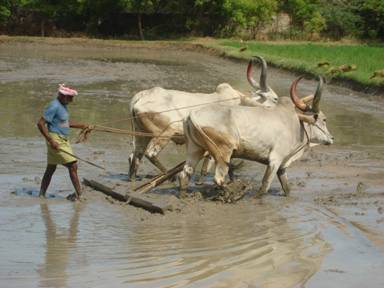
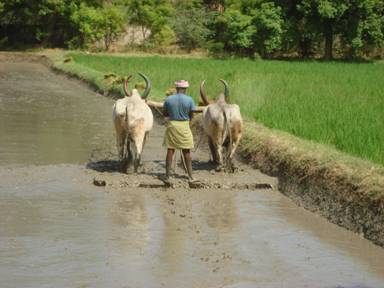
- Provision of shallow trenches (15cm width) at an interval of 3m all along the field will facilitate the draining of excess water at the early growth stage.
Varieties
All the varieties recommended for transplanting can do well under direct wet seeded conditions also. However, the following varieties are more suited.
Varieties |
Duration (days) |
Time of sowing |
Ponmani |
160 to 165 |
1st to 30th August |
Co 43, IR20, ADT 38 ADT 39, Ponni, Improved White Ponni |
125 to135 |
1st to 30th September |
ADT 36, ADT 37 |
105 to 110 |
1st to 10th October |
Sowing
- Follow a seed rate of 60 kg / ha
- Pre-germinate the seeds as for wet nursery
- Seed treatments as adopted for transplanted rice
- Sow the seeds by drum seeder or broadcast uniformly with thin film of water.
- Dual cropping of rice-green manure is economic for nutrient budget and efficient for grain production. For this method use ‘TNAU Rice-Green manure seeder’.
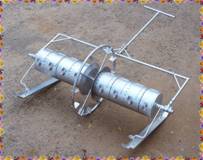
Paddy Cum Daincha Seeder
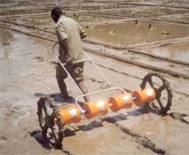
Drum Seeder
After cultivation
- Thinning and gap filling should be done 14 - 21 days after sowing, taking advantage of the immediate rain.
- If dual cropped with green manure, incorporate the green manure when grown to 40cm height or at 30 days after sowing, whichever is earlier, using Cono-weeder.
- Green manure incorporated fields may be operated again with rotary weeder a week later in order to aerate the soil and to exploit organic acids formed if any.
Manures and fertilizer application
- For direct wet seeded lowland rice, the recommendation is same at that of transplanted rice.
- Apply N and K as 25% each at 21 DAS, at active tillering, PI and heading stages.
- If N applied through LCC, use the critical value 3 for broadcasted and 4 for line sown drill seeded rice.
- Entire P as basal applied in the last plough or at the time of incorporation of green manure/ compost.
- Biofertilizers as recommended to transplanted rice may be followed wherever feasible and moisture available.
- Micro nutrient, foliar application and biofertlizers as recommended to transplanted rice.
Weed management
- In wet seeded rice, pre-emergence application of pretilachlor 0.75kg/ha on 8 DAS or pretilachlor + safener (Sofit) at 0.45kg/ha on 3-4 DAS followed by one hand weeding on 40 DAS.
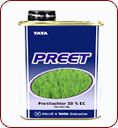
Water management
- During first one week just wet the soil by thin film of water.
- Depth of irrigation may be increased to 2.5cm progressively along the crop age.
- Afterwards follow the schedule as given to transplanted rice.
Other package of practices
- As recommended in transplanted rice.